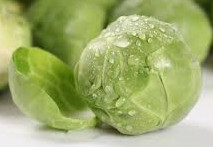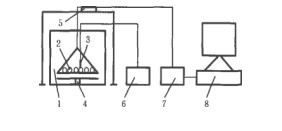
- Shandong Microwave Machinery Co.,Ltd.
- To be the Leader of microwave drying and edible oil refining equipments Manufacturer
Home> Company News> Effect of different drying methods on GABA content and color of cabbage
- AddressNo. 225, Huangqiao Village, Beiyuan, Tianqiao District, Jinan, Shandong, China
- Factory AddressNo. 225, Huangqiao Village, Beiyuan, Tianqiao District, Jinan, Shandong, China
- Phone(Working Time)+86 0531 85064681
- Phone(Nonworking Time)0086-15020017267
- Fax+ 86 0531 85064682
Effect of different drying methods on GABA content and color of cabbage
2019-01-14 14:07:23ABSTRACT: The effects of hot air drying, microwave drying equipment and Microwave-hot air combined drying on GABA and other nutrients content and sensory quality of cabbage were studied, and the suitable drying method was determined and the technological parameters were optimized.
The results showed that with the increase of hot air drying temperature, the content of GABA in cabbage first increased and then decreased, the value of L* decreased, the value of a* and b* increased, and the value of Ealpha increased, which was better at 70
In microwave drying, the GABA content in unbleached cabbage was as high as 0.00325% at 2.5 W/g microwave power, but the color was not good.
Combining the advantages of hot air drying and microwave drying, the optimum Microwave-hot air combined drying process conditions were obtained by orthogonal test and regression equation: the pre-unit microwave power was 2.5 W/g, the moisture content at the conversion point was 40%, and the late hot air temperature was 70 C. The comprehensive quality of cabbage was the best.
Key words: cabbage microwave drying; gamma-aminobutyric acid; drying method; content; color


The production of dried fruits and vegetables and their powdered and convenient food mainly depends on drying. Different drying methods and conditions have great influence on the enrichment and retention of gamma-aminobutyric acid (GABA). At present, hot air drying is the main drying method of cabbage. Because of the long drying time and poor quality of dried products, the direction of joint drying naturally develops with the further study of food drying technology in order to obtain ideal quality of dried products.
In this paper, fresh cabbage was enriched with GABA. The effects of hot air drying, microwave drying and Microwave-hot air combined drying on the quality of cabbage were studied by comparing the content of GABA, color and sensory evaluation. Based on the single factor experiments of hot air drying and microwave drying, L(34) orthogonal test was adopted, and multiple regression equation was used to determine the best one. The drying method of microwave combined with hot air drying was optimized to provide theoretical basis for the production of high quality dried cabbage.
Drying and blanching belong to heat stress for cabbage. Studies have shown that heat shock can enrich GABA in plants. The results showed that the content of GABA in cabbage dried directly without blanching, whether by hot air drying or microwave drying at different temperatures, or by Microwave-hot air combination, was significantly higher than that after blanching, and changed with drying time and drying temperature. Short-time drying was beneficial to the retention of GABA.
 High efficiency food beverage factory stone paper production line
High efficiency food beverage factory stone paper production line Factory price Fully automatic Machine PP/PS Plastic Sheet Production Line
Factory price Fully automatic Machine PP/PS Plastic Sheet Production Line used deformered bar rolling mill production line
used deformered bar rolling mill production line Manufacturing plant automatic factory puffed sticky rice cracker production line
Manufacturing plant automatic factory puffed sticky rice cracker production line Production Line Pp Ppr Plastic Pipe Making Machine 20-63mm Multi-layer Extrusion Production Line For Water Supply
Production Line Pp Ppr Plastic Pipe Making Machine 20-63mm Multi-layer Extrusion Production Line For Water Supply